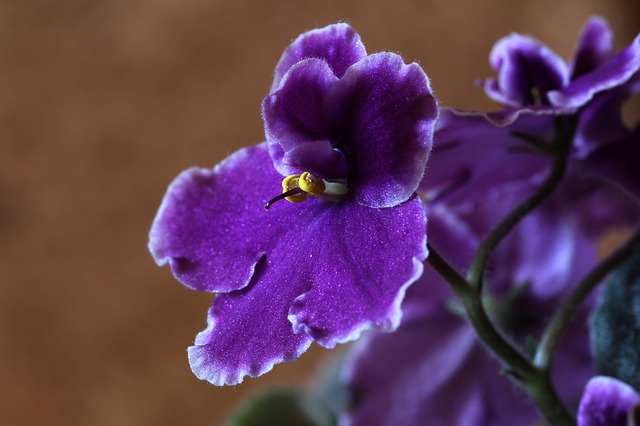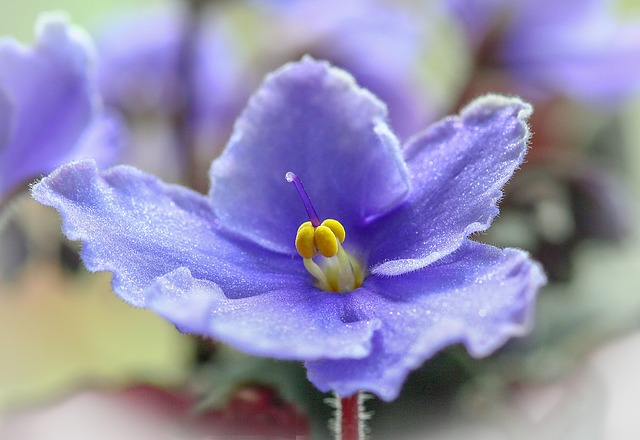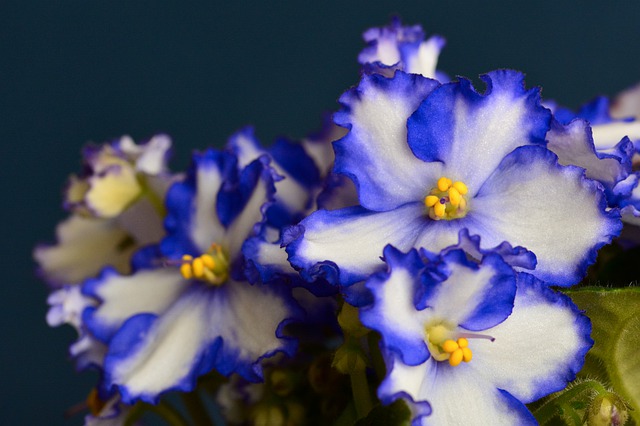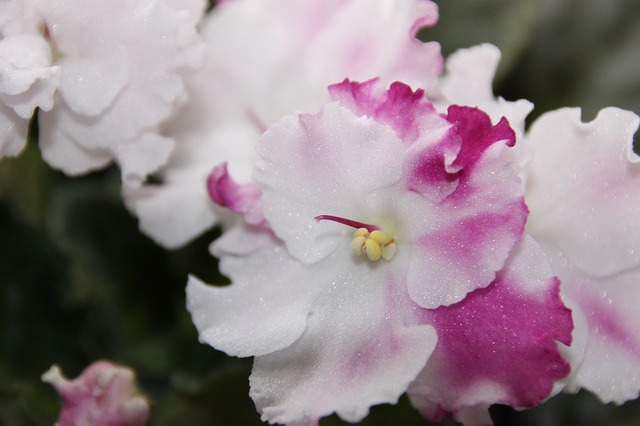African Violets are popular plants to grow indoors and are a good way to fill your home with colour.
While they are considered some of the easiest plants to grow, there are still a few things you need to know if you’re going to be growing African Violets successfully.
This guide is designed to take someone who knows nothing at all about African Violets and turn them into competent growers right away.
While you might not be ready to start winning awards (there are many African Violet clubs around the world), this guide will put you on the right path to doing that, if you so choose.
So let’s get stuck in!
African Violets 101
African Violets, also known as Saintpaulia for reasons that will soon be revealed, are a type of perennial plant native to eastern Africa.
While they’ve been in Africa for longer than there have been humans, they’ve only recently become popularised as house plants.
The man responsible for this is Baron Walter von Saint Paul (hence the scientific name), a German explorer who first brought specimens of the plant back to Europe in 1894.
How Big do African Violets Grow?
Generally from 6-15cm tall and about 6-30cm wide. That said, there are a few different species that grow to different sizes.
This means that no matter how much space you have to display your African Violets in you’ll be able to find one that suits.
What colour flowers do African Violets have?
They tend to have flowers that are pale-blue, purple or white. Here are some examples:

How to Grow African Violets
Now that we know a little bit about the flowers, it’s time to talk about techniques for growing them effectively.

Temperature
When thinking about the environmental conditions most favoured by African violets, you have to think back to their natural environment.
Eastern Africa is warm and so African violets tend to thrive in conditions that are also warm. If you live in an area that is frequently below 20 degrees then you’ll need to figure out a way to keep the plants a little warmer.
While the plants can suffer if conditions get too warm, consequences are much more severe if the plants get too cold.
Humidity
In their natural environment in Eastern Africa, humidity is quite high. So if you’re going to grow African violets you’ll also need to ensure that your environment isn’t too dry.
Around 80% is what the plants love, which may be hard to achieve if you live somewhere dry like Victoria, but as long as it’s above 50% then you’ll generally do ok. Monitor the weather to watch out for particularly dry spells and spray some water around your plants during those times.
You know that low humidity is a problem when buds fail to flower, plant growth is slow and leaves appear brown and dry (they just look and feel unhealthy).
If this becomes a problem for you, you may want to invest in a humidifier for your plants. This is particularly handy if you keep your plants inside and you tend to use a lot of air-conditioning.

Sun & Light
Getting the light right is important for the health of any plant and African violets are no exception.
What sort of light do African Violets need?
You’ll want to give them moderate to high levels of sunlight every day.
If your plant doesn’t get enough sunlight then it’s likely that its leaves will turn yellow and shrivel and it might not flower; the plant needs ample light for photosynthesis to occur.
That said, as with everything, there is a balance. Just as too little sunlight can be harmful to the plant, so can too much sunlight.
You know your plant has had too much sun if the leaves start coming out in brown spots; this is just like sunburn, but for plants.

Watering
African violets require a moderate amount of water to stay healthy. You don’t want the soil they’re in to be dry, but nor do you want it to be completely soaked with water. You want to find the middle point somewhere.
Despite what many people think, overwatering can be just as harmful to the plant as underwatering, so do your best to keep this balance.
The roots of this plant require air to function well, but excess water stops this from happening and it can be harmful to the plant.
When you are watering African violets, try to keep water away from the leaves. Because of the decent amount of sun they receive, water on the leaves can result in brown spots.
How often do African violets need to be watered?
The best way to ensure that you deliver the right amount of water to your plants is with the touch test; feel the soil and if it feels dry to the touch, then add some water. Eventually, you’ll get a feel for how often and how much water you need.
Fertiliser
African violets aren’t too fussy when it comes to fertiliser. You can get away with using just about any type that has equal parts Phosphorous, Nitrogen and Potassium. You do need to ensure that the brand you use is water soluble; if it’s not, then the nutrients won’t break down and your plant won’t be able to use them.
Another important consideration is how much fertiliser to use and how often to do it.
Just as with all the other factors here, either too much or too little fertiliser can have harmful effects for your plant.
This can be tricky to figure out, because it depends, in part, on the type of fertiliser you use. The best guideline is to just follow the instructions on the packet and then watch out for any adverse effects.

Containers
What makes the best pot for an African violet?
The first thing to consider is the size of your pot relative to the size of your plant. You don’t want to use a pot that is too small, otherwise, you’ll end up restricting the growth of the plant and how well it flowers.
A small pot can also result in messy and unhealthy root systems, so a helpful guide is to make sure that your pot has a diameter of about a third of the entire plant.
Another consideration is to use a pot that is slightly shallower than a normal flower pot. This is because the roots of an African violet plant tend to grow outwards rather than down.
Soil
African violets tend to prefer lighter soils that give their roots room to breathe. Many growers have made the mistake of using really heavy soils and thus halting some of the growth they otherwise would have seen.
Something along the lines of peat moss is ideal. You should be able to find this at your local gardening store.

Dealing with Pests & Diseases
Sometimes despite your best effort, your plant might get attacked by pests or might get diseased. One thing you can do to prevent the bad stuff from ever taking hold is to disinfect anything that will come in contact with your plant. This means your hands, your pot and any tools that you may use.
Secondly, make sure that you don’t overwater your plants. Doing this can weaken them and also provide a nice environment for nasty things to take up residence. There are some watering guidelines above.
Another thing you can do is to maintain a decent amount of airflow. Some diseases flourish in environments without much air circulation.
If you keep your plants healthy and you keep a regular eye on them, then you can be confident that your plants will stay healthy. And if they do come under attack, you can take appropriate measures to fix them.
Related Questions
Q: How long do African violets live?
A: Assuming they are well-cared for, African violets can live just about indefinitely. There are lots of cases of these plants living to 50 years and above.
Q: How many types of African violets are there?
A: Right now there are 9 species, 8 subspecies and 2 varieties of African violets that are recognised. There used to be 20 species considered, but there were too few differences between some of them, so they were reduced in number in 2009.
Q: Do African violets need special soil
A: Not really, as long as the soil is somewhat light and allows room for the roots to breathe. You can find more information on what soil to use in the above sections.
Q: What causes spots on African violet leaves?
A: One of the main causes is sunburn caused by watering the plant from above. This is why it’s best to water the plant from below.
Q: How long does it take to propagate African violets?
A: It can take a couple of months for an African violet to propagate. For roots to appear, it might take 3-4 weeks and from there another 3-4 weeks before leaves appear.
Q: Is an African violet annual or perennial?
A: All species of African violets are perennials.
Q: Why is my African violet not blooming?
A: There are a few things that could be causing your African violets to not flower. The first thing to look at is the amount of light your plant is getting. You should also troubleshoot other factors like water and pests to ensure nothing is interfering with their good health.
Q: Do you deadhead African violets?
A: While you don’t deadhead African violets, you can do some pruning in order to keep the plant’s energy where you want it to go.
Q: Why are my African violets dying?
A: There are multiple reasons why your African Violets are not prospering. Water, light and over-fertilising are three common reasons. If you go through the guide above and follow the steps, it’ll ensure that your plant is as healthy as possible.
Q: How long do African violet blooms last?
A: African violets typically bloom for about 9 months of the year, using the other three months to regenerate for the next blooming season.
Q: Why are the leaves on my African violet drooping?
A: The most likely cause of your leaves drooping is a temperature that is too low or too high. You can read the guide above to get a better idea of what temperature ranges work best for African violets.
Q: Can you root African violets in water?
A: Yes, African violets do root in water.
Q: Will African violets hurt cats?
A: No, they are not toxic to cats.
Q: Are African violets poisonous to dogs?
A: No, they are not toxic to dogs.
Conclusion
That’s all we have for you on African violets, I hope you found this guide useful.
Is there something else you’d like to know that we didn’t cover?
Have we missed something important?
Let us know in the comments!



Elenor Densem
March 13, 2020 at 2:34 pmThe leaves on my African Violets have small white fluffy ‘things’ on the leaves. What is this and how do I remedy this. Never had it before.
Sean
March 16, 2020 at 12:21 pmHi Elenor,
Without seeing your African Violets myself it’s hard to say, but from your description it sounds like it could be powdery mildew.
If it is powdery mildew then you’ll want to use an fungicide. You can grab these at your local Bunnings.
I hope that helps!
Elenor Densem
March 13, 2020 at 2:38 pmplease reply